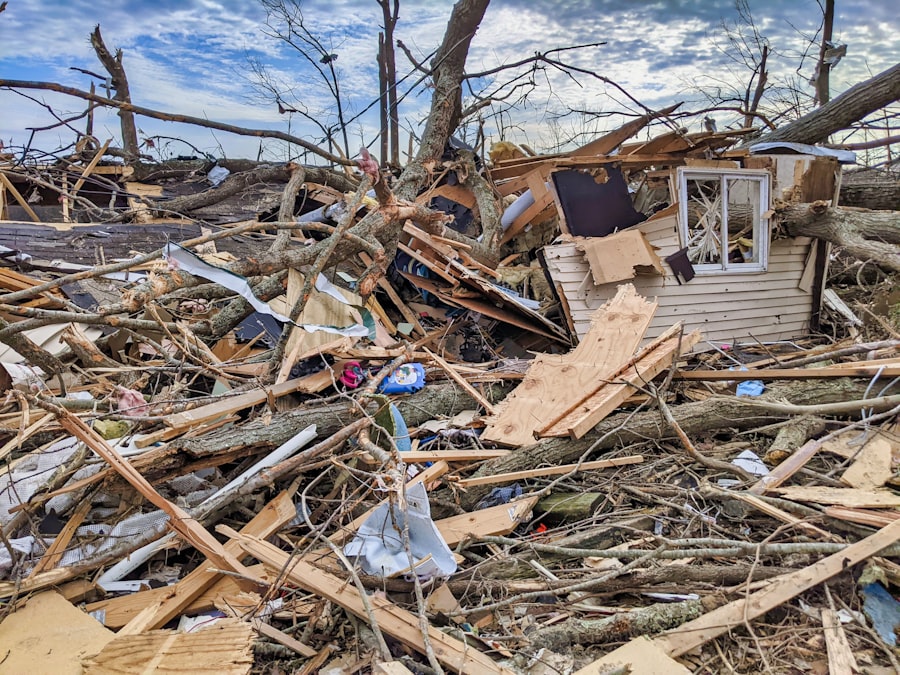As I reflect on the unpredictable nature of severe weather, the significance of having a tornado shelter becomes increasingly clear. Tornadoes can strike with little to no warning, leaving devastation in their wake. The sheer power of these natural disasters can obliterate homes and uproot lives in mere moments.
Having a dedicated space to seek refuge during such an event is not just a precaution; it is a vital component of disaster preparedness. I have come to appreciate that a tornado shelter can mean the difference between life and death, providing a secure environment where I can ride out the storm. Moreover, the psychological comfort that comes from knowing I have a safe place to go during a tornado cannot be overstated.
The fear and anxiety that accompany severe weather alerts can be overwhelming, but the presence of a well-constructed shelter alleviates some of that stress. It allows me to focus on what truly matters—ensuring my loved ones are safe and secure. In a world where climate change is contributing to more frequent and intense storms, investing in a tornado shelter is not merely an option; it is an essential step toward safeguarding my family and property.
Choosing the Right Location for Your Tornado Shelter
Accessibility and Proximity
The shelter should be easily accessible from my home, especially during an emergency when every second counts. I want to ensure that my family can quickly and safely reach the shelter without having to navigate obstacles or travel long distances.
Avoiding Hazards and Obstacles
The location of the shelter should be free from large trees or structures that could pose a risk if they were to fall during a storm. This is crucial to ensuring the safety of my family and the shelter itself.
Elevation and Water Runoff
The elevation of the site is also a critical consideration. Placing the shelter in a low-lying area can increase the risk of flooding, which is something I want to avoid at all costs. Instead, I aim to find a spot that is slightly elevated, ensuring that water runoff will not compromise the safety of my shelter.
Selecting the Best Materials for Your Tornado Shelter

The materials I choose for constructing my tornado shelter play a critical role in its effectiveness and durability. After conducting thorough research, I have come to understand that reinforced concrete is one of the best options available. Its strength and resilience against high winds and flying debris make it an ideal choice for withstanding the forces of a tornado.
I also appreciate that concrete is fire-resistant, adding another layer of safety for my family. In addition to concrete, I consider incorporating steel reinforcements into the design. Steel rebar can significantly enhance the structural integrity of the shelter, ensuring that it remains intact even under extreme conditions.
I have also learned about the benefits of using impact-resistant doors and windows, which can further protect against debris and provide an additional layer of security. By carefully selecting high-quality materials, I am confident that my tornado shelter will provide the protection my family needs during severe weather events.
Designing and Building a Tornado Shelter
| Metrics | Data |
|---|---|
| Cost | 10,000 – 50,000 |
| Size | 8 ft x 8 ft to 10 ft x 10 ft |
| Materials | Steel, concrete, fiberglass |
| Installation Time | 1 week to 1 month |
| Capacity | 4 to 10 people |
As I embark on the journey of designing and building my tornado shelter, I find myself considering both functionality and comfort. The layout should allow for easy movement and accessibility, especially in a high-stress situation where every second counts. I envision a space that accommodates not only my family but also any pets we may have during a storm.
This means ensuring there is enough room for everyone to sit comfortably while waiting for the danger to pass. In terms of construction, I am mindful of incorporating ventilation systems into my design. Proper airflow is essential, especially if we are required to stay in the shelter for an extended period.
I also think about adding features such as lighting and communication devices to keep us informed about weather updates while we are inside. By carefully planning the design and construction process, I aim to create a tornado shelter that is not only safe but also functional and comfortable for my family.
Ensuring Safety and Security in Your Tornado Shelter
Safety and security are paramount when it comes to my tornado shelter. I recognize that simply having a structure in place is not enough; I must also ensure that it is equipped with features that enhance our protection during a storm. One of the first steps I take is to install heavy-duty locks on the door, preventing unauthorized access while also ensuring that we can secure ourselves inside without worry.
Additionally, I consider implementing an emergency communication system within the shelter. This could include battery-operated radios or even satellite phones that allow us to stay connected with the outside world during severe weather events. Having access to real-time information can be invaluable in making informed decisions about when it is safe to leave the shelter.
By prioritizing safety and security measures, I am taking proactive steps to protect my family during one of nature’s most unpredictable phenomena.
Stocking Your Tornado Shelter with Essential Supplies

Once my tornado shelter is built and secured, I turn my attention to stocking it with essential supplies. I understand that being prepared means having everything we might need during our time in the shelter readily available. First on my list are non-perishable food items and plenty of water—enough to sustain my family for at least 72 hours.
Canned goods, granola bars, and dried fruits are all excellent options that require minimal preparation. In addition to food and water, I make sure to include first aid supplies in our emergency kit.
I also think about comfort items such as blankets, pillows, and games or books to help pass the time if we find ourselves waiting out a storm for an extended period. By carefully curating our supplies, I feel more confident that we will be well-equipped to handle whatever challenges may come our way.
Maintaining and Inspecting Your Tornado Shelter
Maintaining and inspecting my tornado shelter is an ongoing responsibility that I take seriously. Regular checks ensure that everything remains in good condition and ready for use when needed. I set aside time every few months to inspect the structure for any signs of wear or damage, paying close attention to the door seals and ventilation systems.
This proactive approach helps me identify potential issues before they become significant problems. In addition to structural inspections, I also review our supply inventory regularly. This includes checking expiration dates on food items and replacing any supplies that may have been used or damaged over time.
Keeping our emergency kit up-to-date gives me peace of mind knowing that we are always prepared for whatever nature throws our way. By committing to regular maintenance and inspections, I am ensuring that our tornado shelter remains a reliable refuge when it matters most.
Seeking Professional Help for Constructing a Tornado Shelter
While I have learned a great deal about constructing a tornado shelter on my own, there are times when seeking professional help becomes necessary.
These professionals often have experience with various designs and materials that can enhance the safety and effectiveness of my shelter.
Moreover, hiring professionals can save me time and effort in navigating complex construction processes. They can assist with obtaining permits and ensuring compliance with safety regulations, which can be daunting tasks for someone unfamiliar with construction standards. By collaborating with experts in this field, I can feel confident that my tornado shelter will be built to withstand severe weather conditions while providing maximum protection for my family.
In conclusion, understanding the importance of a tornado shelter has led me on a journey filled with careful planning and preparation. From choosing the right location and materials to designing a functional space equipped with essential supplies, every step has been crucial in ensuring my family’s safety during severe weather events. By maintaining our shelter regularly and seeking professional assistance when needed, I am committed to creating a secure haven where we can find refuge when nature unleashes its fury.
If you are interested in learning more about tornadoes, you may want to check out an article on the Fujita Scale for tornadoes. This scale is used to categorize tornadoes based on their intensity and the damage they cause. You can read more about it here. Understanding the Fujita Scale can help you better prepare for severe weather events and make informed decisions about building a tornado shelter.

